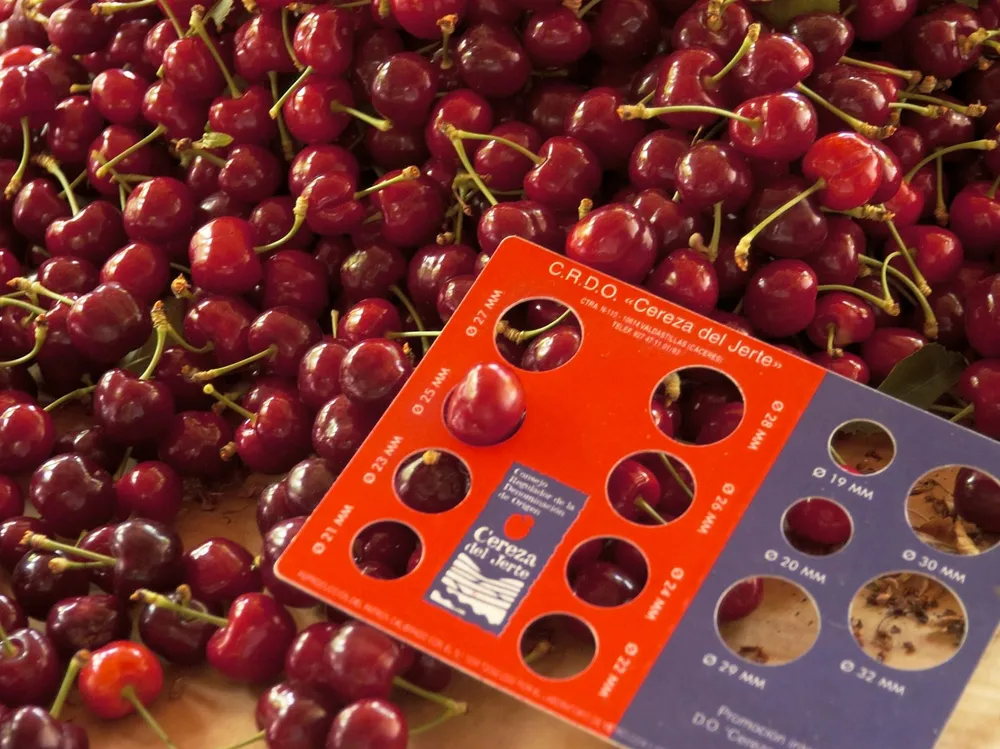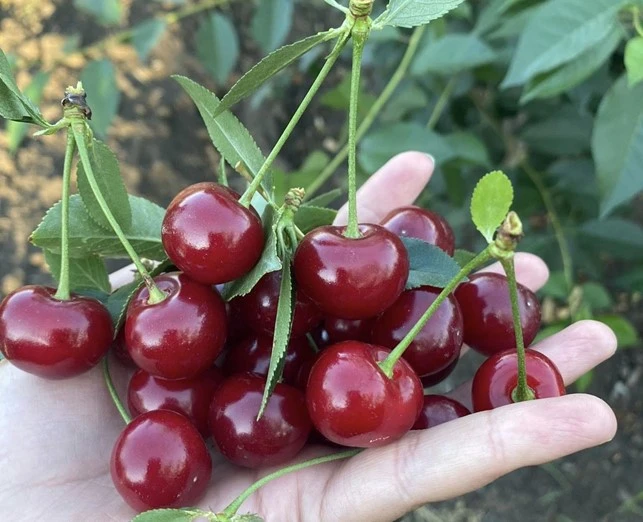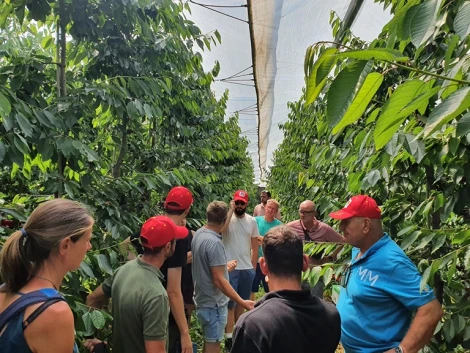The Regulatory Council of the Protected Designation of Origin (PDO) Cereza del Jerte (Spain) will certify three new cherry varieties in this campaign. Specifically, these are the well-known Van, Lapins, and Burlat varieties. This year, three new Jerte PDO cherry varieties will be introduced to the market. The PDO Cereza del Jerte has successfully modified its specifications to accommodate the increasing number of products under its label.
With these new certifications, the PDO Cereza del Jerte could gain an additional 10 to 12 million kilos of cherries, provided that weather conditions allow it. Furthermore, certified products will be available on the market throughout the entire cherry harvesting season in the Jerte Valley.
José Antonio Tierno, President of the Protected Designation of Origin Cereza del Jerte, emphasized that the certification of new cherry varieties is "great news." This will allow the PDO to "meet market demands" and, therefore, "increase the presence of the PDO Cereza del Jerte in the eyes of consumers, which translates into an opportunity for producers to continue benefiting from a differentiated and unique product."
 Figure 1. The harvesting and selection of cherries in Jerte: a manual process with a long tradition.
Figure 1. The harvesting and selection of cherries in Jerte: a manual process with a long tradition.
"These new varieties complement the Picota del Jerte, which will continue to be our flagship and symbol because it is a unique variety of the Jerte Valley," concluded Tierno.
He recalled that the PDO had requested the inclusion of new varieties to address the reduction in production recorded in recent campaigns due to climate change and the natural evolution of crops.
Jerte cherries available on the market for longer
Over the last 30 years, minimum temperatures in the Jerte Valley have risen by one degree, while maximum temperatures have increased by 2.5 degrees, along with significant changes in annual precipitation. These climate changes have impacted native varieties, causing early and irregular flowering and reducing fruit ripening times. "As a result, in recent years, we have observed a significant reduction in the production of certified fruit," explained Tierno.
The introduction of the Van, Lapins, and Burlat cherry varieties will help to extend production. Until last season, the PDO Cereza del Jerte cherry market spanned from mid-May to mid-June. With these new varieties, it will now be possible to extend the season from April to August.New cherry varieties have been widely grown in the Jerte Valley for over three decades. Additionally, they share the specific characteristics of orography, soil, climate, and hydrography with the previously certified cherry and Picota varieties.

Figure 2. The three varieties added to the specifications will complement the traditional Picota del Jerte cherries.
Tierno highlighted that "these are sweet and very flavorful varieties, like all those produced in Jerte." With these new additions, the Jerte PDO Cherry will now certify four types of cherries—Navalinda, Van, Lapins, and Burlat—as well as four Picota de Jerte varieties—Ambrunés, Pico Colorado, Pico Negro, and Pico Limón Negro.
Thanks to these new varieties, Jerte PDO cherries are arriving on the market earlier. The Burlat cherry begins production from late April to mid-May. Being the earliest, it has a size ranging from 22 to 26 mm.
The Van variety is cultivated from mid-May to mid-June and has a size between 24 and 28 mm, while the latest variety, Lapins, is produced from mid-June to August and has the largest caliber, reaching sizes between 24 and 32 mm.
It is worth noting that the Regulatory Council of the Protected Designation of Origin Cereza del Jerte is an entity that works to promote and certify the origin and quality of the protected products: Jerte cherries and Picotas.
Source and images: Consejo Regulador de Denominación de Origen Cereza del Jerte
Cherry Times - All rights reserved














